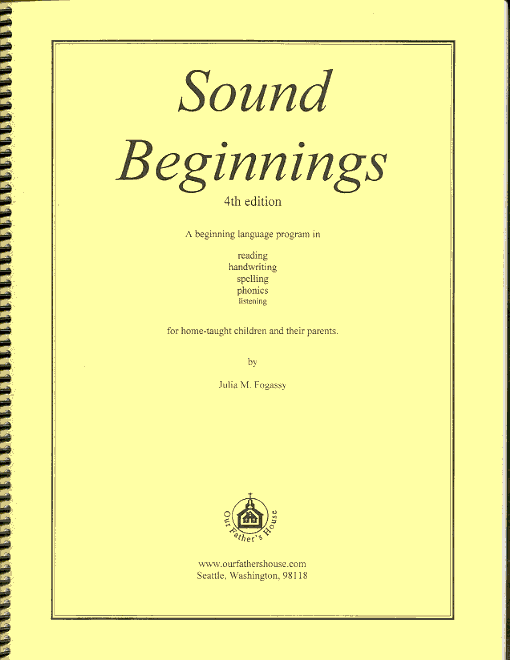Orton-Gillingham methodology undergirds this program that teaches phonics, reading, handwriting, spelling, and listening. Author Julia Fogassy has written this program specifically for homeschooling parents, and it requires no training and minimal preparation time other than listening to the CD that comes with the program so that parents can familiarize themselves with the phonograms. Lesson plans are very detailed, telling exactly when to use each part of the teacher's manual and the other components. Each section includes easy-to-follow scripts for parents.
You should start your child with this program before teaching letters and sounds in any other fashion since the methodology is comprehensive. At completion, students will have been taught all the phonograms, an extensive vocabulary, manuscript printing, spelling, and reading comprehension. Also, the program strongly stresses listening skills with continuous dictation exercises.
Children concentrate on learning the phonograms and their sounds and spellings before beginning to read words, unlike many programs that teach some phonograms, then introduce words that contain only those phonograms. Children learn the special marking system for indicating sounds of the phonograms plus they learn to divide words into syllables as they write them.
Special lined paper comes with the program in both a packet and a notebook. Handwriting instruction refers to the unique line placement used on this paper. As with other Writing Road to Reading programs, students create their own notebooks.
Other components to this program are a set of phonogram flashcards, a package of student worksheets (which serve as tests to some extent), the Early Reader's Bible (500+ page book), and a pencil and gripper.
The phonogram cards and worksheets are also essential components. The Early Reader's Bible can be used after lesson 23 since almost all of the phonograms will have been taught by that point. While this book is an "easy reader" it does not present increasingly difficult levels of vocabulary. Some parents might prefer to begin with easy phonetic readers such as the recommended Primary Phonics Readers from Educators Publishing Service that Julia recommends.
Extensive spelling lists at the end of the teacher's manual can continue to be used up through twelfth-grade level. Christian "vocabulary" and some specifically Catholic words (e.g., liturgy, canonization, Eucharist, monasticism) are included.
As with other Writing Road to Reading programs, this is a rule-oriented program that strives to teach thorough mastery. Christian content differentiates it from many such programs, and it is also quite easy to use and very reasonably priced.








